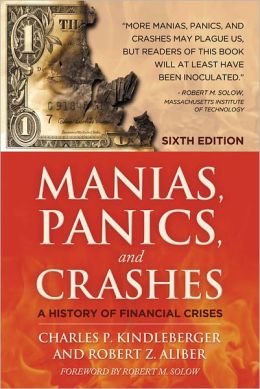Wednesday, March 20, 2013
A thought about economic bubbles.
Apparently much of economics is based on the assumption of equilibrium. I am currently reading Manias, Panics and Crashes: A History of Financial Crises (Edition 6) by Charles P. Kindleberger and Robert Z. Aliber. It shows a history of hundreds of years in which equilibrium is not achieved.
There are some economists who have been studying systems of non-linear equations, systems with positive and negative feedback, to model economies. Those approaches would allow the modeling of instability and indeed of systems that never achieve a stable state.
Kindleberger and Aliber seem to show a history of change in the economic system as national economies become more and more interlinked. The authors also treat a large number of different "shocks" that can trigger the development of a bubble, treating them as exogenous; a really satisfying model would I suppose treat those events as endogenous, leading to larger and larger systems.
The book focuses on financial bubbles that expand and burst leading to crashes. It seems obvious that one wants to provide some negative feedback in financial systems to reduce the velocity of manias and panics. Alternatively one can introduce drag in the system to damp out excessive oscillation. Indeed, Kindleberger and Aliber suggest that good banking practice is well known as are the regulatory controls to encourage good practice; they do damp the oscillations and limit the occurrence of bubbles and crashes.
However, when regulations are imposed by government, firms rapidly find ways to get around them (and thus restore the potential for instability). Moreover, there are short term profits available in manias and crashes and thus in the lack of regulation that allow them; the politics behind regulatory law seem regularly to remove feedback controls and drag in financial systems, again leading to instability.
Labels:
analysis,
book review,
Economics,
History
Subscribe to:
Post Comments (Atom)

No comments:
Post a Comment